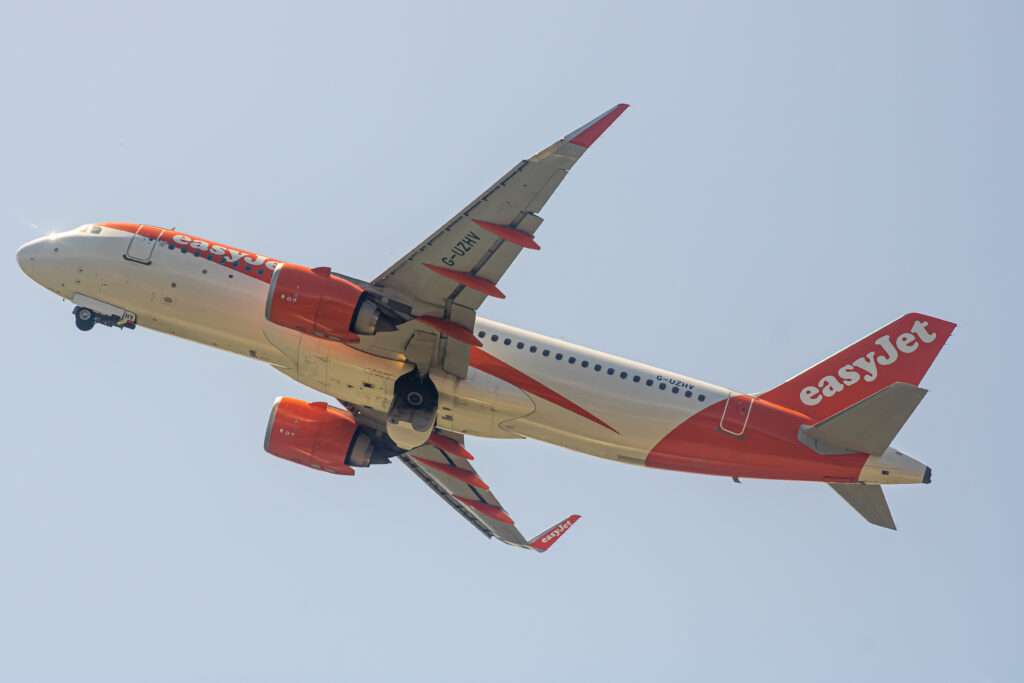easyJet, with its signature orange planes, is synonymous with affordable travel in Europe.
But the airline’s journey, spanning nearly three decades, is a story of innovation, calculated risks, and a constant drive to make flying accessible.
This article explores the history of easyJet, from its founding by a charismatic entrepreneur to its current position as a dominant force in the European low-cost carrier market.
Birth of a Low-Cost Vision (1995)

easyJet’s story begins in 1995 with Sir Stelios Haji-Ioannou, a Greek-Cypriot entrepreneur with a vision to democratize air travel.
He saw a gap in the market for affordable, no-frills flights within Europe. Luton Airport, traditionally used by charter airlines, became the unlikely birthplace for this new venture.
To incentivize the fledgling airline, Luton offered easyJet free use of office space, exemplifying the company’s early focus on minimal overhead.
The airline launched with just two leased Boeing 737-200s, offering flights between Luton and Glasgow, followed shortly by Edinburgh.
easyJet’s marketing campaign was as bold as its vision, with the slogan “Making flying as affordable as a pair of jeans – £29 one way” grabbing attention.
This disruptive pricing strategy challenged the established airlines and resonated with budget-conscious travelers.
Taking Flight: Growth and Innovation (1996-2007)

The initial success spurred rapid growth. easyJet quickly transitioned from leased aircraft to owning its own fleet, initially sticking with Boeing 737s.
However, a significant shift occurred in 1998 when the airline embraced the Airbus A319, a more fuel-efficient aircraft better suited to their short-haul model.
This marked the beginning of a long-standing relationship with Airbus that continues to this day.
Another key innovation was the early adoption of online booking in 1998, capitalizing on the burgeoning dot-com boom.
This move empowered customers and established a direct sales channel, bypassing travel agents and further reducing costs.
easyJet’s commitment to a paperless office and streamlined operations further reinforced its low-cost structure.
By the early 2000s, easyJet had established itself as a major player in the European market.
New bases across Europe opened, and the network expanded to include popular holiday destinations.
The airline also weathered challenges like the 9/11 attacks and the SARS outbreak, demonstrating its resilience.
Consolidation and Continued Expansion (2007-2020)
In 2007, easyJet made a strategic move by acquiring GB Airways, a Gatwick-based airline with a strong network across Southern Europe and North Africa.

This acquisition not only expanded easyJet’s reach but also provided access to valuable slots at Gatwick, a major London airport.
easyJet further solidified its position as a leader in the low-cost market by becoming the first such carrier to offer corporate travel options through the Global Distribution System in the same year.
The following years saw continued expansion, with easyJet opening new bases and adding more routes.
The airline also embraced technological advancements, introducing features like mobile boarding passes and self-service bag drops to further streamline the travel experience.
However, the airline faced criticism for its focus on secondary airports, which often meant longer travel times for passengers.
Recent Challenges and the Road Ahead (2020-Present)
The COVID-19 pandemic delivered a severe blow to the aviation industry, and easyJet was no exception.
The airline was forced to ground its fleet, resulting in significant financial losses and employee furloughs.
Despite the challenges, easyJet took decisive action to weather the storm, including raising capital and restructuring its operations.
As the world recovers from the pandemic, easyJet is cautiously optimistic about the future.
The airline is focusing on rebuilding its network, with a renewed emphasis on leisure destinations.
Sustainability is also becoming an increasingly important focus, with easyJet exploring ways to reduce its carbon footprint through fleet modernization and the use of sustainable aviation fuels.
Looking ahead, easyJet faces continued competition from other low-cost carriers and traditional airlines offering budget options.
However, the airline’s strong brand recognition, commitment to affordability, and focus on innovation position it well for the future.
easyJet’s story serves as an inspiration for businesses seeking to disrupt established industries by prioritizing efficiency and customer needs.

Click the banner to subscribe to our weekly newsleter.

Click the photo to join our WhatsApp channel so then you can stay up to date with everything going on in the aviation industry!









